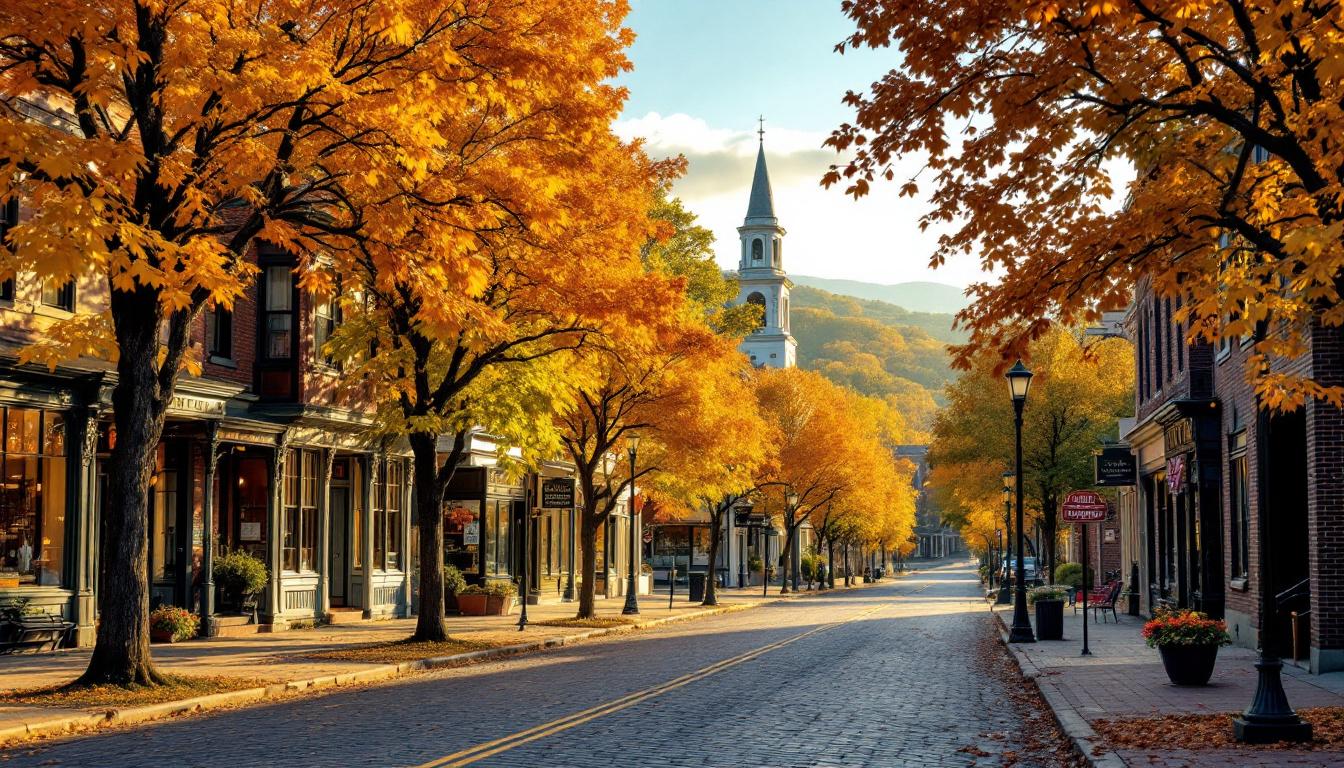Stepping off the main highway into Lewisburg, West Virginia, feels like discovering a time capsule that somehow escaped the march of modern America. This tiny town of just 3,700 residents spreads across 3.8 square miles, yet every street corner whispers stories from a century ago.
Walking down Washington Street, the commercial heart beats with the same rhythm it has since the 1920s. The General Lewis Inn, operating continuously since 1929, still welcomes guests with hand-hewn beams and authentic period furnishings collected from the Greenbrier Valley decades ago.
Locals call this place “authentic Appalachia” – and they’re fiercely protective of what makes it special. Unlike Colonial Williamsburg’s staged recreation, Lewisburg residents actually live, work, and raise families within these historic walls, creating an authenticity money simply cannot buy.
The architecture that time forgot
Sears catalog homes still standing proud
Between 1920 and 1922, residents built Sears kit houses that still function as family homes today. The Westly Sears kit house at 200 North Court Street remains a testament to American ingenuity, where a local meat merchant constructed his dream home from a mail-order catalog during the Roaring Twenties.
Every building tells America’s story
The 350-acre Historic District encompasses 112 contributing buildings spanning 1763 to 1977, creating layers of American history you can literally touch. The 1837 Greenbrier County Courthouse still dominates the town square, while tree-lined North Court Street showcases residential architecture that defined small-town prosperity a century ago.
Community traditions that survived modernity
The great turkey runs live in memory
Old-timers still share stories of Lewisburg’s famous “Great Turkey Runs,” when hundreds of turkeys were driven down Main Street to market. These tales, preserved through the Greenbrier Historical Society’s oral history project, connect today’s residents to agricultural traditions that shaped Appalachian identity.
Prohibition era secrets in plain sight
During the 1920s, the nearby Pence Springs Hotel operated a hidden basement speakeasy, importing Kentucky whiskey and buying moonshine from local Summers County distillers. Today’s residents celebrate this rebellious spirit with annual 1920s-themed fundraisers, keeping the era’s social energy alive through community gatherings.
Living history versus tourist recreation
Authentic community life continues
Unlike Gatlinburg’s commercial chaos or Williamsburg’s costumed performances, Lewisburg maintains genuine community function within historic structures. Residents shop for groceries, attend town meetings, and celebrate weddings in the same buildings their great-grandparents used, creating continuity most tourist destinations can only simulate.
Preservation without commercialization
The Historic Landmark Commission follows guidelines designed to “preserve the district but not limit growth,” allowing organic community evolution while protecting architectural integrity. This balanced approach maintains authentic character without freezing the town into a museum exhibit.
Planning your authentic Appalachian experience
Fall 2025 seasonal magic
September through November offers ideal visiting conditions with mild temperatures perfect for exploring historic streetscapes. Fall foliage typically peaks in late October, creating stunning backdrops for photographing architectural gems like the Governor Samuel Price House.
Respectful engagement with local culture
Visit Tuesday through Thursday when tourism traffic lightens, allowing genuine interaction with residents who’ve chosen to maintain America’s small-town heritage. Support local businesses like the General Lewis Inn, where antique collectors spent years procuring authentic 1800s furnishings to create atmospheric dining experiences.
Lewisburg proves that authentic American heritage doesn’t require theme park reconstruction or costumed interpreters. Here, history lives naturally within a community that chose preservation over profit, creating experiences unavailable in commercialized tourist destinations.
For travelers seeking genuine connection to America’s small-town past, Lewisburg offers something increasingly rare: the real thing. Visit soon, respect the community’s pace, and discover how small-town America actually functioned before highways and shopping malls changed everything. This is living history at its most authentic – and locals intend to keep it that way.
